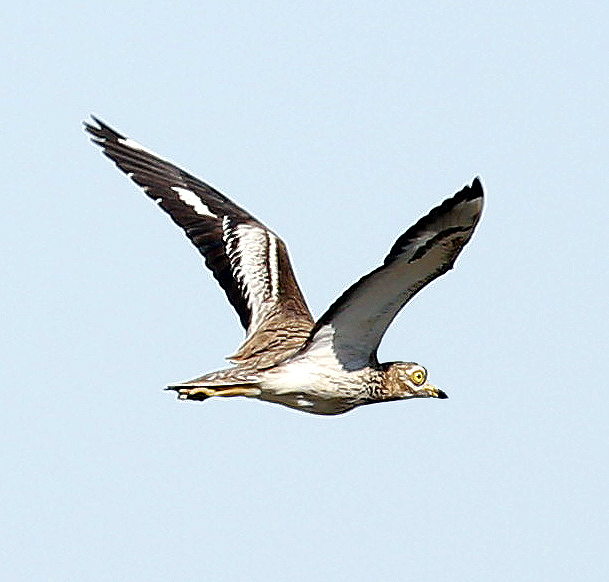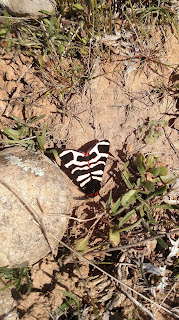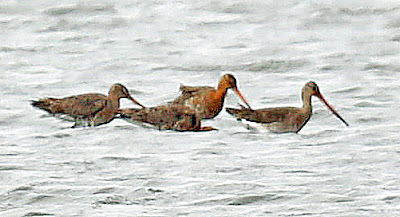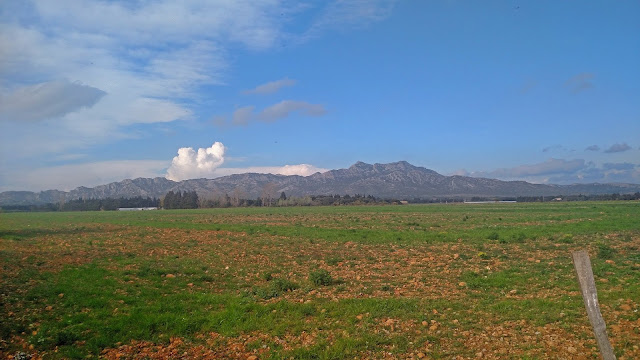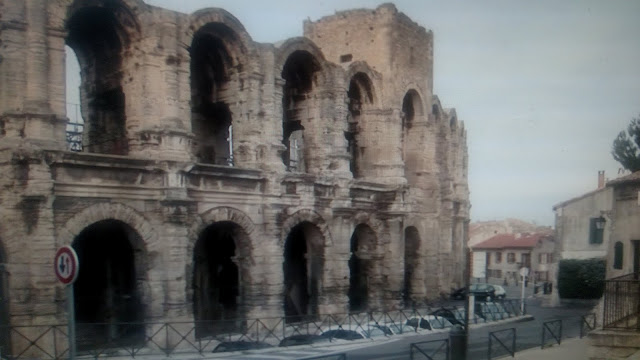 |
| Congaree River, South Carolina |
3/31/21 0200 New discoveries of ghost birds and past New Jersey birders are intriguing.
While researching roost data on woodpeckers a once restricted access, 55 year old letter from ornithologist/botanist John V. Dennis to the USFWS was uncovered. He may have been the most active and successful field researcher for Ivory-bills in the last century.
John Dennis detailed that two diligent birders from NJ, and others, had seen and reported an Ivory-billed Woodpecker from 1959 to 1963 on several occasions in coastal South Carolina (SC). This area of the lower Santee River has a long history of sightings for this species.
One of the Jersey birders saw a different Ivory-billed in appropriate habitat from a small plane in Texas in those same years.
P. William Smith Jr. of Matawan, NJ and J. Lee Edwards of Montclair, NJ and several others saw the SC bird(s) on 4 separate dates with the events detailed in the Dennis letter, linked here and below.
 |
| Singer Tract LA, male |
 |
| Large Bald Cypress Congaree NP, notice our researcher standing farther away and in depression. 2nd tallest in world at 141 feet. |
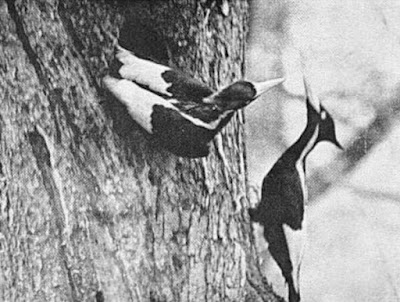 |
| Singer Tract, male female |
Involved with these sighting and reports are some luminaires of Ivory-billed and conservation history; some modern NJ birders comment on these assumed departed birders below.
The circumstances illustrate how various government agencies receive and collect via their offices, employees, contractors, citizens and volunteers, reports on rare animals. The trivial to important information from the public may remain hidden for decades. History like some species can go extinct. More on this tangent in a future article.
Smith Jr. encountered the Ivory-billed twice that April 1959 day with 1 or 2 other people; during the first encounter Davis Crompton heard the bird with Smith. Crompton was one of the handful of people on Earth with extensive Ivory-billed field experience.
Davis Crompton was with Dennis when they surprised the ornithological world at the time by "rediscovering" and photographing Ivory-bills in east Cuba (1948) after one of the many decades long gaps in pictorial evidence for these two species.
This scientist and avid birder are credited with taking the last known unequivocal pictures of Ivory-bills in a mountain range of Moa (see below, but also see Lamb picture).
They may be the only two people who ever saw and will ever see both species (American and Cuban Ivory-billed).
 |
| Cuban IBWO, Dennis and Compton |
 |
| Almost certainly Cuban Ivory-billed, 1956 Lambs. Picture only discovered recently. |
Dr. J. Lee Edwards of Montclair, NJ saw the Ivory-billed in the same SC area as Smith of Matawan in 1963. Richard Pough wrote Dennis with praise for Edward's field birding acumen. Pough knew Edwards who told him he had also seen an Ivory-billed in Texas from a survey plane. Pough had encouraged Edwards to look for the Ivory-billed; Richard was with National Audubon and the founder of The Nature Conservancy.
Various NJ Birders have commented on these two birders with little on Edwards:
"Hello Fred,
I knew Bill Smith very well and birded with him on numerous occasions from 1974 to 1984, when he moved briefly to Massachusetts (where we had a Garganey in February 1985). He then moved to xxxxxxxx, Florida, where I stayed with him and xxxxxxxxxx, several times.
The last time I saw him was in 1994, when I stayed there. Somewhere around 2000, they moved to xxxxx, Washington, but I lost contact with him. I was told by a mutual friend, now deceased, that Bill has lost his enthusiasm for birding and sold his bird books.
Our mutual friend, who passed away in 2016, told me that Bill had died, but I don’t know what year.
Bill was an excellent and very knowledgeable birder and wrote a number of site guides for Records of NJ Birds as well as being a Regional Editor before he moved away.
I don’t recall any mention of Ivory-billed, but I do know that he traveled to South Carolina around 1960 to look for (and see) the Bachmann’s Warbler that was present for several years. My memory fails me on any more details and, unfortunately, the one person who could have helped is our mutual friend, Ken.
Lee Edwards was very active in the Urner Club before I came to NJ in 1973, but I never met him."
And:
"I spent a couple of weeks on Gambell with P. William (Smith) in the 1990's. He lived in south Florida for many years after leaving NJ.
In October 1999 George Wenzelburger, Jim Zamos and I chased a Eurasian Dotterel in Ocean Shores, Washington. P. William was living there at the time."
And:
"P. William Smith was a former editor for Region 5 of Records of NJ Birds. He moved to Florida in the mid to late 80s."
As a subtheme P. William Smith Jr. of Matawan, is likely the last NJ birder to have seen both the Bachman's Warbler and the "Kint".
If anyone has any information on these NJ birders, questions or additions please contact me ( avtrader @comcast.net ) .
The Dennis letter confirms that some of the SC sight reports, referenced in the official Draft Recovery Plan for the Ivory-billed Woodpecker are from these NJ birders (see green bordered line right below). The USFWS has files and numerous reports on the IBWO that remain shelved, vague or private unless various actions occur to sunlight these "buried" reports.
Despite there being a substantial number of publicly known Ivory-billed sightings post Singer Tract (after 1940) the USFWS and predecessors seemed to be unaware that sitting on reports could make them susceptible to claims that they were moth balling reports or hesitant to do much conservation centric work. Ivory-billed reports by citizens were treated like the treasure in the end of Raiders of the Lost Ark.
The Dennis' letter sheds light on several topics including the globally consistent bureaucratic habit of storing valuable information and artefacts in dark files. A follow up article may examine some of these tangents.
The decades overdue Species Recovery Plan (Draft) has vague sighting details from the USFWS compared to what Dennis originally gave to the same USFWS. No one knows how many direct, in-person reports, phone calls, letters and associated details throughout the Ivory-bills range have been ignored, lost or are still filed away next to similar collections on Eskimo Curlews, Bog Turtles, etc.
Evidently there were repeated reports from the same area until 1967 in just this small area of SC that borders the 220,000 acres of Francis Marion National Forest.
These reports however at best only represent a few birds.
Even with the notable Ivory-billed events of 1999 (Kulivan, observes at length a pair, LA; this centuries scores of sightings of a few birds) the USFWS kept pertinent content details of specific sightings to themselves. They mustered only 8 words for more than 10 subject sightings focused on by Dennis and perhaps others.
 |
| From Draft IBWO Recovery Plan --Some SC Sightings, Green Boxes, Unknown Observer = NJ Birder Names Detailed Here |
The actions or inaction by government entities together with my hope, without guarantee, to complete the attraction studies we were doing on Ivory-bills in 4 states compels me to say a bit more about our own past official projects. We were testing under permit various acoustical attraction methods as a precursor to a hypothetical netting attempt.
Several years ago birders and scientists, including some from NJ staffed four formal woodpecker studies in SC; we were fortunate to experience the greatest US virgin forest left east of the Mississippi River. During these confidential studies I spent collectively over 30 days in South Carolina with ~ 27 days of wilderness camping (see pictures).
Like the USFWS, the National Park Service (NPS) requires various confidentiality and other agreements to enter restricted wilderness areas, broadcast calls and remain camping in restricted, no camping areas for ~ 4 weeks to do acoustical and attraction research for Ivory-bills.
Yearly Final Reports were filed and are password protected. The results could be collated by the lead researcher (myself) and published. However there is some desire to adjust methodologies to finally determine if an IB can be attracted towards a net array.
 |
| Study Applications in South Carolina, 4 years, NBP |
It was a tough but unique and unforgettable experience as we dodged thousands of large orb weavers, cottonmouths, feral hogs, mosquitoes, mud, rain, the hard ground and hunger. Many species of animals and several hundred woodpeckers were recorded. Three of us, the whole team that year, had a definite acoustical encounter with our main quarry.
That week I also had a sighting of a large mostly white-winged woodpecker followed soon after by a clear double knock heard by the team. There were also other acoustical IB detections during the studies and some probable IB detections.
In 2009 a pair was seen well by another zoologist not far from where we also detected an Ivory-bill in SC. About the same time a park employee, a die hard skeptic was convinced by a sighting in the same area. More on all this in the future.
Thanks for the comments on the subject birders in order of receipt from NJ birders Bob Dodelson, Tom Bailey and Bill Boyle.
If anyone has any information on the subject NJ birders, questions or additions please contact me ( avtrader @comcast.net ) .
SC IBWO sightings by NJ birders




























